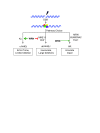Recent Advances in Understanding Werner Syndrome
- PMID: 29043077
- PMCID: PMC5621106
- DOI: 10.12688/f1000research.12110.1
Recent Advances in Understanding Werner Syndrome
Abstract
Aging, the universal phenomenon, affects human health and is the primary risk factor for major disease pathologies. Progeroid diseases, which mimic aging at an accelerated rate, have provided cues in understanding the hallmarks of aging. Mutations in DNA repair genes as well as in telomerase subunits are known to cause progeroid syndromes. Werner syndrome (WS), which is characterized by accelerated aging, is an autosomal-recessive genetic disorder. Hallmarks that define the aging process include genomic instability, telomere attrition, epigenetic alterations, loss of proteostasis, deregulation of nutrient sensing, mitochondrial dysfunction, cellular senescence, stem cell exhaustion, and altered intercellular communication. WS recapitulates these hallmarks of aging and shows increased incidence and early onset of specific cancers. Genome integrity and stability ensure the normal functioning of the cell and are mainly guarded by the DNA repair machinery and telomeres. WRN, being a RecQ helicase, protects genome stability by regulating DNA repair pathways and telomeres. Recent advances in WS research have elucidated WRN's role in DNA repair pathway choice regulation, telomere maintenance, resolution of complex DNA structures, epigenetic regulation, and stem cell maintenance.
Keywords: Aging; DSB repair; Senescence; Telomere maintenance; WRN; Werner Syndrome.
Conflict of interest statement
Competing interests: The authors declare that they have no competing interests.No competing interests were disclosed.No competing interests were disclosed.No competing interests were disclosed.
Figures


References
-
- Masala MV, Scapaticci S, Olivieri C, et al. : Epidemiology and clinical aspects of Werner's syndrome in North Sardinia: description of a cluster. Eur J Dermatol. 2007;17(3):213–6. - PubMed
Publication types
LinkOut - more resources
Full Text Sources
Other Literature Sources
Medical

